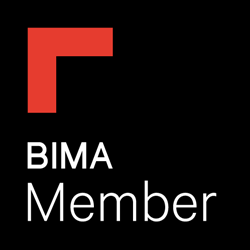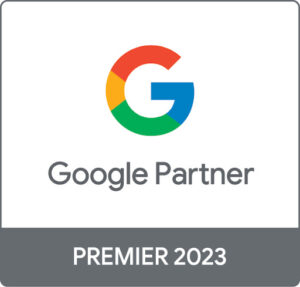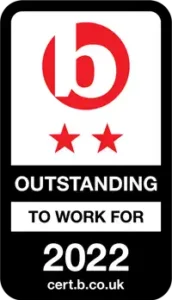I do not have ADHD. I am, however, smack-bang in that sweet-spot generation which sits as firmly Millennial with Gen-Z sympathies. I saw the rise and fall of MySpace and Livejournal, and now I’m rubbing shoulders (not literally, thankfully) with the #e-bois and #cottagecore girlies on TikTok.
What does this mean, and why have I brought ADHD into this at all? “You’re not a medical professional!” I hear you cry. And you’re crying correctly. I’m also not an expert on Buddhism or being Zen in any way. What I am is someone who grew up online, and now has no surviving attention span. I even made a coffee between writing these paragraphs.
You’re like me – your attention span is short too, right? Because you want me to get to the point. And I will. Riiiiight… now. Here we go.
Is TikTok The Key to Inner Peace? I Think So
Okay. Hear me out. I don’t strictly mean the dance routines, questionable lip-syncing, or even the continuous stream of cute animals dressed as former Love Island cast members (just my FYP? Fair enough). I also don’t mean in the, “our campaign has gone viral and we’re going to be millionaires”, kind of inner peace. I’m talking the comfortable-clothing, deep-breathing, on-a-beach-with-a-Negroni-Sbagliato kind of inner peace.
Why? Because of science. I’m using my brain. And so is TikTok.
I recently attended a talk by Rachel Fellows at Brighton SEO. Rachel was talking about how TikTok is so successful as a social media channel because it’s essentially a dopamine slot machine where the wins just keep coming. You see a video, you enjoy it, and your brain is so pleasantly surprised by the sensation of joy in this dark, dark world, that it rewards your excellent video browsing skills with a dose of dopamine.
The classic hunter-gatherer scenario. You bring home the woolly mammoth (good content) and your brain celebrates with a tribal cave dance (releases dopamine). Then what happens?
Well, it’s what happened that time I went to an excellent ramen place by the Brighton Dome and then was obsessed with finding it again. I wanted more. The difference is, I went to that ramen place at night time, and my sense of direction is useless (much worse than my mammoth allegories), and so I had no chance.
What makes TikTok different from a Brighton ramen restaurant?
TikTok, on the other hand, makes it super duper easy. Unlike Facebook, which has all kinds of things to nosh on – videos, images, posts from family, friends, and people you went to school with and can’t quite remember but they’re pregnant now and you’re desperate to know who the father is, TikTok just does one thing.
Video. Video after video after video, and they’re served to you utterly without friction, like a delightful slip ‘n’ slide off Brighton pier. Shortform, salty little delicious nuggets of content with only a minuscule search function and a couple of teeny icons between you and the good stuff. So you can scroll all day long (74 minutes a day on average, according to Rachel’s research), and: ding-ding-ding: dopamine! Welcome to Vegas, baby!
What’s it got to do with ADHD, and how can I achieve inner peace when I’m trying to figure out how to make obscure trending audio relevant to my funeral-law business?
Well. Here’s the connection. You know that short attention span we all have now? It’s not a new thing. You know who has always had a short attention span? People with ADHD. And what’s the connection between ADHD and TikTok? It’s that tasty, tasty treat we all know and love. Dopamine. And if you don’t believe me – believe these articles from medical experts. People with ADHD have been snuffling for dopamine for years, and they know where to find it.
Which leads me to my next point. According to Attitude mag, in the two years that TikTok has been alive, “#ADHD videos [have received] 2.4 billion views [on their platform]“. In their article, they consider whether the benefits these videos bring – raising awareness of ADHD symptoms for sufferers – outweigh the cost of misdiagnosis and misrepresentation of symptoms – which can lead to stigmatisation of sufferers and misuse of NHS time. (Worth a read – after this blog of course, unless your attention span has wandered already?)
It’s telling that the whirlpool, hub, eye of Sauron, runny, sunny yolk of the egg of this conversation about ADHD spawned on TikTok – rather than any other channel. Why? Because you only know about the matrix when you’re in it. Gen-Zers (who make up the majority of the audience on TikTok, but not all of it) are savvy consumers. They can spot a brand deal or fake news a mile off. They’re curious and inquisitive, and they know something is happening to their brains and they want to know why.
And no – I’m not saying at all that TikTok has given us all ADHD. That’s derivative, dumb, and just scientifically wrong – hence Attitude’s article above. What I’m saying is that many digital consumers have developed that sweet tooth that people with ADHD have a mouth of, and they’re starting to question where it’s come from.
What’s the connection between all this – and when do we get to the bit about sweet, sweet inner peace?
Okay. This article by The National Library of Medicine states that people with ADHD experience “a dysfunction in the “brain reward cascade,” especially in the dopamine system, causing a low or hypo-dopaminergic trait, the brain may require dopamine for individuals to avoid unpleasant feelings.”
What does this mean? It means people with ADHD seek out dopamine like sugar from a Pez dispenser, and unlike neuro-typical people who experience a high, for them, it brings a sense of clarity and calm. Counter-intuitive as it may seem, a slow-drip buzz of dopamine keeps people with ADHD mellow in the same way that some studies have shown that drinking coffee throughout the day can aid concentration for people with ADHD.
In this case: Dopamine = calm.
This leads me to inner peace.
Let’s give inner peace another name: Zen
The Cambridge Dictionary describes Zen as “relaxed and not worrying about things that you cannot change”, but that’s not all. The term “zen” originates from a Japanese school of Mahayana Buddhism which teaches meditative techniques to guide you towards inhabiting a “zen state”. Buddingbuddhist.com describes this as “a mental state in which the person is not focused on either disturbing thoughts or external stimuli. It is a state of being awake but not focused on the world outside.”
So – someone totally calm, unfocused and mindless, unaware of their environment as they float blissfully through an empty brain. Anyone else used to stare gormlessly at Saturday cartoons as a kid, blind to the mess in their room and the dog whining to go out? It’s a kind of zen. Bright colours, cheerful sounds, and nothing too cognitively complex to process – sound familiar? What about if I tell you this study from the University of Washington shows that people “enter a ‘dissociative state’ when using social media“. You’re mentally checking out, gorging on dopamine and essentially becoming a cheerful Bagpuss-the-cat type character who is content to laze on the window with a belly full of sunshine. Your eyes have glossed over, and it’s goodbye cost of living crisis, out of sight and out of mind. That’s a kind of zen. Wonderful – and so, so addictive.
(Of course – it’s not all rainbows and Lizzo songs, this article, interestingly enough from InTheLifeofZen.com, highlights the perils of doomscrolling on your mental health. That being said – doomscrolling is not the same as the infinite scroll offered on TikTok. Not because TikTok is blameless – of course not, it’s still rife with #fakenews and body dysmorphia and everything else – but in my humble opinion as half of team #PaidSocial at Seed, doomscrolling refers more to platforms like Twitter and Facebook where news (especially bad news) is shared more frequently. Being video-based – it’s a little harder for news articles and headlines to break through.)
What’s the takeaway here?
Well, in summation, in the same way, that dopamine brings calm to people with ADHD, the cacophonous, loud, overwhelming noise of TikTok means that it’s doing something to neuro-typical brains too – it’s blissing them out, for better or worse.
Additionally, in James Clear’s, “Atomic Habits”, he states that dopamine secretion (disgusting but scientifically accurate vernacular) eventually begins to precede an event anticipated to be joyful. Once you’ve experienced the trigger of good-feeling, your brain knows it’s coming, triggering the desire for more (he references persistent gamblers being observed to notch up a spike of dopamine before placing a bet, not after). This drives desire, leading to the formation of a habit – leading to hours whiled away online.
Now what? I can’t unlearn this but I don’t know what to do
Hey – we’re a marketing agency here – we can’t just drop that and not expand on what it means for advertisers. Well – what it means is that there’s a captive audience. In fact, a captivated audience. But it also means their absorption levels may be a little lower than you like. And hey – that stat that suggests TikTok users browse for 74 minutes a day? If an average TikTok is 21-34 seconds long, that’s a lot of content they can consume. I’ll even do the maths because it’s easy: Your TikTok audience is consuming about 150 TikToks PER DAY.
So again – what can you do about it? Well, you want them to remember you. You want to stand out in the deluge. And how do you do that? It goes back to our old friend dopamine. Surprise and delight your audience – engage with them. Stick your stuffy, sales-driven formats on a different platform – they won’t work here. TikTok users know what they want, and it’s dopamine. And if you can give it to them, they’ll keep on coming back.








